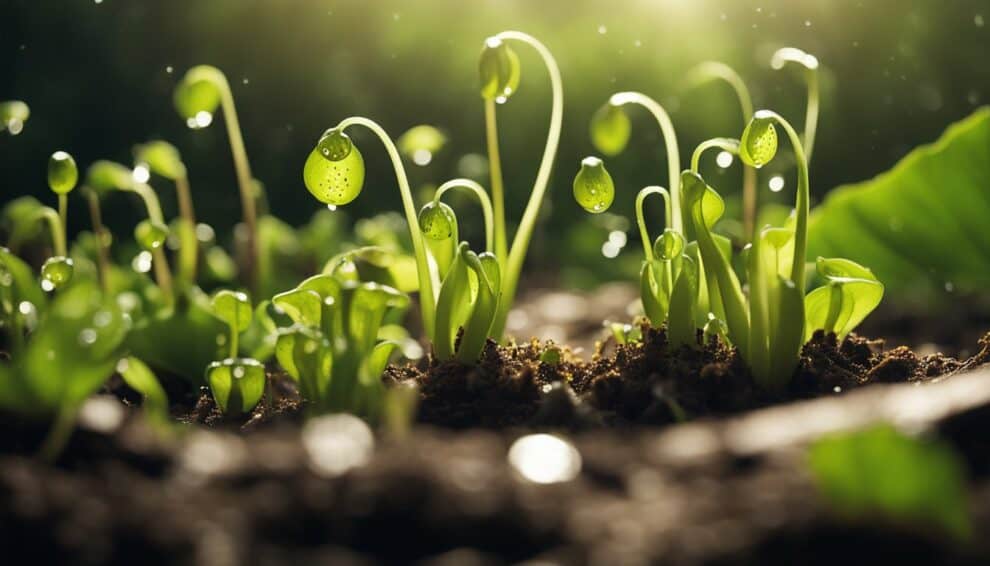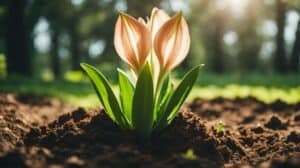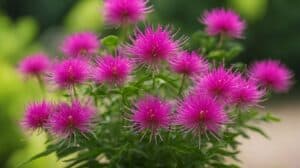Pitcher plants are a fascinating group of carnivorous plants that have evolved to attract, trap, and digest insects and other small prey.
Among the most popular pitcher plants are Nepenthes and Sarracenia, which are prized for their unique shapes, colors, and sizes.
However, growing these plants from seeds or cuttings can be challenging, especially for beginners.
In this article, we will explore some of the best techniques for multiplying pitcher plants and achieving success in propagation.

One of the reasons why pitcher plants are so intriguing is their ability to adapt to different environments and conditions.
For example, some Nepenthes species grow in high-altitude forests, while others thrive in lowland swamps.
Similarly, Sarracenia plants can be found in wetlands, bogs, and even roadside ditches.
Despite their diversity, all pitcher plants share a common feature: their modified leaves, or pitchers, which are designed to capture and digest insects.
By multiplying pitcher plants, growers can create their own collections and share their passion with others.
Understanding Pitcher Plant Biology
Nepenthes Growth Habits
Nepenthes, commonly known as tropical pitcher plants, are native to Southeast Asia, Madagascar, and Australia.
These plants grow in a variety of habitats, including rainforests and high-altitude mountains.
Nepenthes are unique in their ability to capture and digest insects, small mammals, and even birds.
The leaves of Nepenthes are modified into pitchers, which are used to trap prey.
The pitchers are filled with a digestive fluid, which breaks down the prey and extracts nutrients.
Nepenthes are also known for their beautiful and intricate flowers, which are often used in hybridization.
Nepenthes are typically epiphytic, meaning they grow on other plants, but they can also be terrestrial.
They require high humidity, warm temperatures, and bright, indirect light.
Nepenthes are sensitive to water quality, and they prefer rainwater or distilled water.
Sarracenia Lifecycle
Sarracenia, commonly known as North American pitcher plants, are native to the eastern United States.
These plants grow in a variety of habitats, including bogs, swamps, and wetlands.
Sarracenia are also carnivorous, and they capture and digest insects using their modified leaves.
The leaves of Sarracenia are modified into pitchers, which are used to trap prey.
The pitchers are filled with a digestive fluid, which breaks down the prey and extracts nutrients.
Sarracenia are also known for their beautiful and intricate flowers, which are often used in hybridization.
Sarracenia are typically terrestrial, meaning they grow in soil, but they can also grow in standing water.
They require high humidity, cool temperatures, and bright, indirect light.
Sarracenia are sensitive to water quality, and they prefer rainwater or distilled water.
Overall, understanding the growth habits and lifecycles of Nepenthes and Sarracenia is crucial for successfully propagating these unique and fascinating pitcher plants.
Propagation Basics

When it comes to propagating pitcher plants, there are a few basic steps that every grower should follow.
Here are some important things to keep in mind when starting your propagation journey.
Choosing Your Propagation Method
There are two main methods for propagating pitcher plants: division and cuttings.
Division involves separating a mature plant into smaller sections, each with its own set of roots.
Cuttings, on the other hand, involve taking a piece of a mature plant and rooting it in soil or water.
Both methods have their pros and cons.
Division is a reliable way to create new plants, but it can be stressful for the parent plant and may not be possible if the plant is too young or too small.
Cuttings are less stressful for the parent plant and can be taken from younger plants, but they may not always root successfully.
Tools and Materials Needed
No matter which propagation method you choose, there are a few tools and materials that you will need. These include:
- Sharp, sterile scissors or a knife
- A clean work surface
- Potting mix or rooting hormone (depending on the method you choose)
- Containers for planting (such as pots or trays)
- Plastic wrap or a clear plastic bag (to create a humid environment for cuttings)
It’s also a good idea to have a spray bottle filled with water on hand to mist your plants and keep them hydrated during the propagation process.
By following these basic steps and using the right tools and materials, you can successfully propagate your pitcher plants and create a thriving collection of these fascinating carnivorous plants.
Propagation Techniques

There are several propagation techniques that can be used to multiply pitcher plants, including seed sowing, cuttings, division, and tissue culture.
Each method has its own advantages and disadvantages, and the choice of technique will depend on the specific needs and goals of the grower.
Seed Sowing
Seed sowing is a popular method of propagating pitcher plants, especially for species that produce large quantities of viable seeds.
The seeds can be sown in a suitable growing medium, such as sphagnum moss or peat moss, and kept moist and warm until they germinate.
Once the seedlings have emerged, they can be transplanted into individual pots and grown on until they are mature enough to be planted out.
Cuttings
Cuttings are another common method of propagating pitcher plants, and can be used to produce clones of the parent plant.
Stem cuttings can be taken from the parent plant and rooted in a suitable medium, such as perlite or vermiculite.
Once the cuttings have developed roots, they can be transplanted into individual pots and grown on until they are mature enough to be planted out.
Division
Division is a technique that can be used to propagate mature pitcher plants that have developed multiple crowns or offsets.
The plant can be carefully dug up and the crowns separated into individual plants, each of which can be replanted in its own pot or location.
Tissue Culture
Tissue culture is a more advanced method of propagating pitcher plants, and involves growing new plants from small pieces of tissue taken from the parent plant.
This technique requires specialized equipment and expertise, and is typically used by commercial growers or researchers.
Overall, the choice of propagation technique will depend on the specific needs and goals of the grower.
Each method has its own advantages and disadvantages, and growers should carefully consider the requirements of their plants and their own resources and expertise before deciding which technique to use.
Caring for Young Pitcher Plants

Optimal Growing Conditions
To ensure the healthy growth of young pitcher plants, it is important to provide them with optimal growing conditions. These conditions include:
-
Light: Pitcher plants require bright, indirect sunlight.
They should be placed near a window that receives plenty of light, but not direct sunlight which can burn the leaves.
-
Temperature: Pitcher plants prefer warm temperatures between 60-85°F (15-29°C). They can tolerate cooler temperatures, but growth may slow down.
-
Humidity: These plants thrive in high humidity environments.
If the air in your home is dry, consider using a humidifier or placing a tray of water near the plant to increase humidity.
-
Soil: Use a well-draining soil mix that is high in organic matter. Avoid using regular potting soil as it can hold too much water and cause root rot.
-
Water: Keep the soil moist but not waterlogged. Water the plant when the top inch of soil feels dry to the touch.
Common Challenges and Solutions
Young pitcher plants can face a few common challenges, but with proper care, they can overcome them. Here are some challenges and their solutions:
-
Insects: Pitcher plants are carnivorous and attract insects. However, sometimes insects can damage the plant or cause disease.
To prevent this, remove any dead insects from the plant and use an insecticidal soap if necessary.
-
Fungal diseases: Pitcher plants can be prone to fungal diseases such as powdery mildew.
To prevent this, avoid getting water on the leaves and provide good air circulation around the plant.
-
Root rot: Overwatering or poorly draining soil can cause root rot.
To prevent this, make sure the soil is well-draining and only water the plant when the top inch of soil feels dry to the touch.
By following these guidelines, you can ensure the healthy growth of your young pitcher plants and enjoy their unique beauty for years to come.
Frequently Asked Questions

What are the best conditions for rooting Nepenthes cuttings?
Nepenthes cuttings root best in warm, humid conditions. A temperature of around 80°F and high humidity levels of 80-90% are ideal for rooting.
It is also important to keep the soil moist but not waterlogged to prevent rotting.
Can you explain the division method for propagating Sarracenia?
The division method involves separating the rhizomes of mature Sarracenia plants into smaller sections, each with its own set of roots and pitchers.
This can be done in the early spring before new growth appears. Each section can then be planted in its own pot with fresh soil and watered thoroughly.
What is the typical time frame for Nepenthes cuttings to establish roots?
Nepenthes cuttings can take anywhere from a few weeks to several months to establish roots, depending on the species and growing conditions.
Patience is key when propagating pitcher plants, as they can be slow to root.
Is it possible to propagate pitcher plants in water, and if so, how?
Yes, it is possible to propagate pitcher plants in water. Simply place a cutting or leaf in a container of distilled or rainwater and wait for roots to form.
Once roots have formed, the cutting can be planted in soil.
What are the signs of successful propagation in pitcher plants?
Successful propagation can be seen when new growth appears from the cutting or division.
Additionally, the presence of new roots is a good indicator of successful propagation.
How can basal rosettes be used in the propagation of pitcher plants?
Basal rosettes, which are small plants that grow at the base of mature pitcher plants, can be separated and planted in their own pots to propagate new plants.
This method is especially useful for species that are difficult to propagate from cuttings or divisions.












